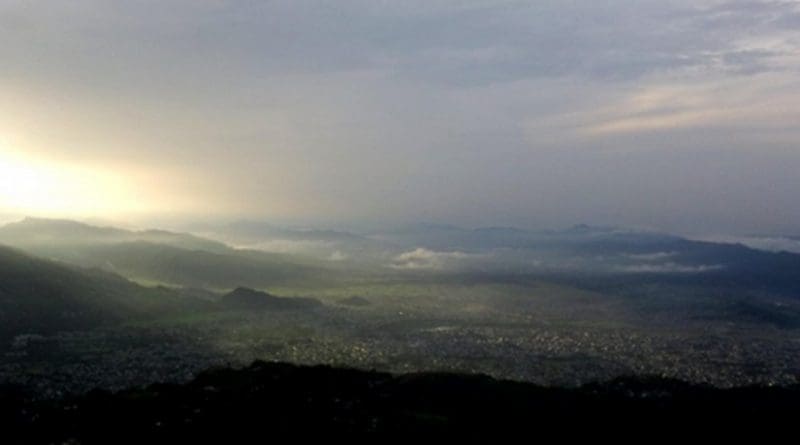Tourism Disaster Temptation: The Case Of Nepal – OpEd
It reads like the idealisation of tourism. Enthusiastic, intrepid traveller goes to an impoverished state marred by natural disaster to encourage currency, consumption and travel. In this sense, it is a global phenomenon, involving a good deal of hustling, and a good deal of moralising, about preventing a supposedly bad deal from going worse. The locals are treated as desperate for the money; the tourist, for the daredevil sightseeing.
Japanese climber Nobukazu Kuriki is one such figure, setting out to be the first to make the summit of Everest since the disastrous April earthquake that cut, and here, the emphasis is important, the climbing season short. “Nepal’s tourism minister, Kripasur Sherpa, gave Kuriki his climbing permit at a ceremony in Kathmandu on Sunday.”
That such an event needed a ceremony suggests sacralisation on the one hand, edification on the other. But much of it is plainly material, rooted in Mammon’s temptation and tourism’s allure – each Everest climbing permit costs $11,000, in addition to a range of other government levies. These go into the coffers of the tourist ministry, and various private hands.
Kuriki is also keen to remind his audience that his climb is not self-centred bravado, a narcissistic binge that will involve sherpas and a Japanese film crew. He really is, so goes the suggestion, risking his neck for the betterment of Nepal. “The main purpose of my climb is to spread the message that Nepal was safe for climbers and trekkers even after the earthquake.”
Very good of him to do so, especially given the media rosiness of his courage in the face of nature’s ravaging elements – he, we are told, lost nine fingers to frostbite in an effort in 2012. This is meaty, dangerous stuff.
Coverage of disasters varies on nationality and purchase value. Anonymous, dead locals do not make good copy, tending to vanish in the statistical margins as boring matter. Suitably cashed-up saints, generally from developed states with an intention to salve their conscience, do. They inject “capital” into the impoverished economy and remind others that they do.
The networks, with appropriately tuned antennae, get busy when the fatalities come in, more interested in capturing the photogenic mountaineer, somewhat foolhardy but supposedly courageous, into circulation. Stories, with heavy pockets, are personalised. The sentimental narrative of humankind against mother nature is also mobilised. The locals take not so much second place as last in the pecking order of discussions.
The April earthquake made no such distinction, killing some 8,600 people. There were slivers of discussion noting the trite point that most who suffered were the same who tend to suffer in natural disasters: the indigent and the vulnerable. A Guardian piece on April 27 suggested that “what the thousands of victims share is that they are poor.”
A few personal snippets are documented – that of Garima Saha, to take one example, a twelve-year old who spent 36 hours in darkness. She only regained consciousness after nine hours, having suffered multiple fractures to her shoulder.
Victims of natural disasters occasionally become, in the overly active media cycle, demons of anger and dissatisfaction. In the wake of Hurricane Katrina, much emphasis was placed on the elements of medieval styled brigandage and looting. Suddenly, those who were suffering were no longer human. Ditto the case of Haiti, victimhood became the alibi for socialised theft and stern counter-measures by the state.
Even after the Nepalese earthquake, the disgruntlement was noted in The Hindu. The Nepalese Prime Minister Sushil Koirala, on visiting relief camps, met rage in the form of people “seizing food and water supplies, four days after a devastating earthquake”. A certain Rajana, a survivor, was quoted in anger: “We’ve been left starving in the cold and the best this government can give us is this queue. Why are they so slow?”
The coverage, however, has granted a different forum to the climbing fraternity, slanted, eager to highlight when the tourism industry would revive. National Geographic highlighted the question many on the climbing side were asking: “Will Everest’s Climbing Slow Down After Disasters?”
The climbing takes precedence like a romantic thrill. Would there be more climbers this year? Would there be any in autumn, a period regarded as particularly difficult by the climbing fraternity? Well, things did certainly cease till Kuriki’s project.
“This Japanese daredevil,” goes the headline in Quartz, “will be the first to risk climbing Mount Everest after the Nepal earthquake.” The author also concedes that he was at Everest Base Camp on April 25 and “sustained minor injuries from the avalanche.” In the struggle with nature, he prevailed while others did not.
Al-Jazeera’s headline pays tribute to the Japanese climber and the avalanche victims – those 19 tourists killed. The vast numbers of the locals are otherwise buried, both literally and symbolically – as they will continue to be done. In the lottery of life, such climatic catastrophes tend to do their worst to the worse off.

